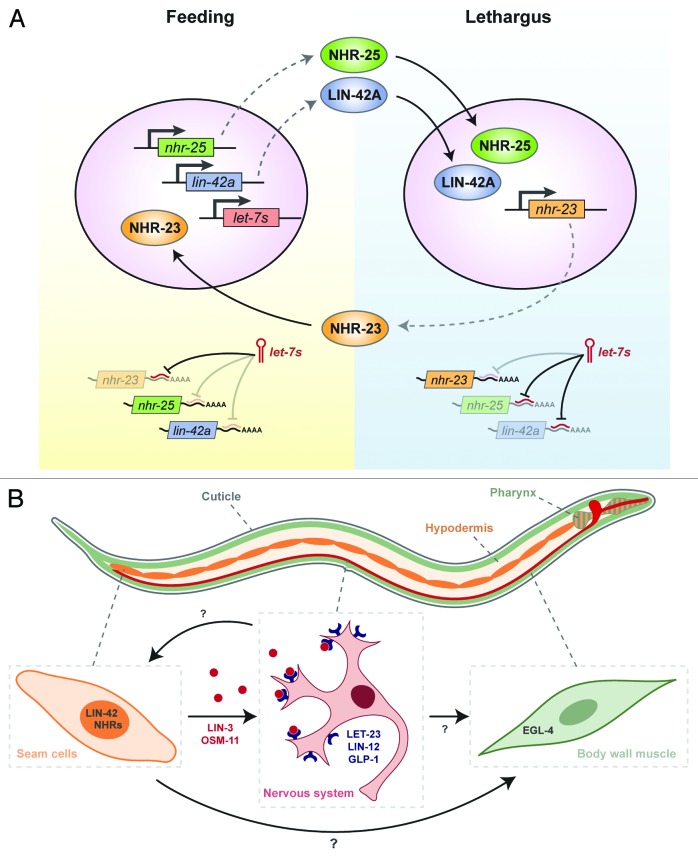Figure 3. Modeling the Molting Timer. (A) We propose that interconnected positive and negative regulatory interactions among LIN-42, certain NRs, and let-7 family miRNAs compose a developmental oscillator that operates in the epidermis of juveniles and drives rhythmic molting cycles. This diagram depicts hypothetical molecular events that might occur in seam cells as animals enter and exit the larval molts. (B) The proposed molting timer may also regulate the rhythmic production of endocrine cues that affect animal behavior. Additional signals among the epidermis (orange), the nervous system (red), and body wall muscles (green) are expected to regulate lethargus and ecdysis. See text for additional information about this model.

An official website of the United States government
Here's how you know
Official websites use .gov
A
.gov website belongs to an official
government organization in the United States.
Secure .gov websites use HTTPS
A lock (
) or https:// means you've safely
connected to the .gov website. Share sensitive
information only on official, secure websites.
